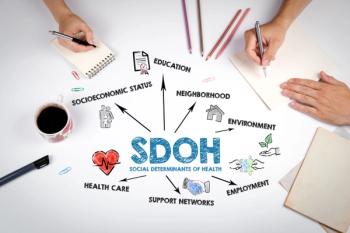
Quality of Life, Caregiver Impact Key to Future Imetelstat Research in Lower-Risk MDS: María Díez Campelo, MD, PhD
María Díez Campelo, MD, PhD, concludes by highlighting imetelstat’s real-world quality of life benefits for patients with lower-risk myelodysplastic syndromes (MDS) and the need for improved patient-reported outcome tools and caregiver-focused research.
In the third and final part of the interview, María Díez Campelo, MD, PhD, of the University Hospital of Salamanca, explored the real-world implications of her
Revisit parts
This transcript was lightly edited; captions were auto-generated.
Transcript
How might these health-related quality of life findings influence real-world treatment decisions for patients with lower-risk MDS?
This is very important because we need to increase hemoglobin levels to reduce transfusions, but the main goal for every treatment is to improve quality of life, and that, finally, the patient feels better to do all activities. Our goal should be [for these patients] to return to [their] normal [everyday lives]. This is the smallest step in order to reach this goal, so I think it's important to take this into account.
It's very difficult sometimes for the patients with lower-risk MDS to have an improved overall survival. So, we don't have this goal in the relapsed/ refractory setting. With the treatment, we have to convey that this treatment is beneficial for the patient, because they are going to feel better, do more activities, and [it will] have a positive effect on the emotional, physical, and psychological settings. It's important, I think, for the patient and also for the doctor to bridge this world.
What additional research is needed to build on these findings? What questions are you hoping to answer in future studies?
We have to continue to address these measures of quality of life and patient-related experiences because I think the tools are still ongoing and need to be improved. Sometimes, we don't realize that we are not able to measure this benefit very well in the patient. I think that we have to improve the measures, the tools, for this analysis, and to clearly separate the benefit of the patients [who] are responding to the drug from those patients not responding to the drug. The benefit is clearly associated with responses, and we have to better measure the benefit in responding patients.
I think that we have to still keep treatment ongoing in this line, and also we have to address other relevant implications for the patient, [like] the impact on caregivers, because sometimes the patient needs a caregiver for the consultants and the treatments. We also have to address the benefit of these treatments in caregivers, because they always need a caregiver, and we have to take [this] into account because the patient's feelings sometimes are related to the caregiver's needs.
Newsletter
Stay ahead of policy, cost, and value—subscribe to AJMC for expert insights at the intersection of clinical care and health economics.





























































